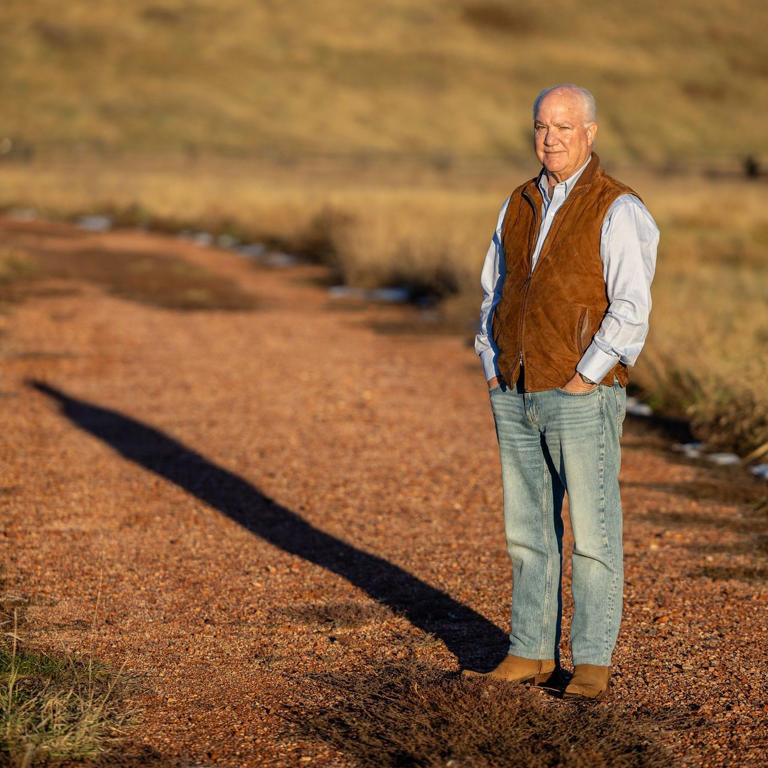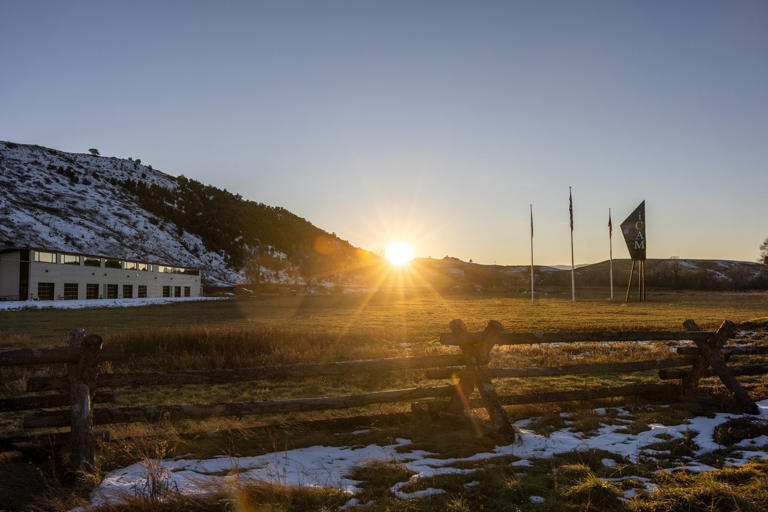Story by Julie Steinberg • The Wall Street Journal
Twelve years ago, former Wall Street banker Randall Atkins bought an old coal mine outside Sheridan, Wyo., sight unseen, for about $2 million.
He thought the mine might eke out a profit. Instead, Atkins recently learned it could bring a windfall.
Several years after Atkins bought the Brook Mine, government researchers came around asking if they could run some tests to see if the ground contained something called “rare-earth elements.”
When Atkins acquired the mine, he says he “didn’t know the difference between rare earths and rare coins.” When he got the test results, including some as recently as September, he says he was surprised and humbled: His sleepy mine contains what might be the largest so-called unconventional rare-earth deposit in the U.S., according to government researchers.
At current market prices, it could be worth around $37 billion.
Atkins’s company, Ramaco Resources, recently started extracting larger samples for more analysis. If the project proceeds as intended, it would be the first new rare-earths mine in the U.S. since 1952.
It is a heady expansion—and lofty mission—for a $620 million company whose main focus has been mining metallurgical coal, the kind used in steelmaking. And it could be personally fulfilling for Atkins, whose father built a global energy conglomerate before he became ensnared in a series of scandals, including Watergate.
The U.S. is racing to catch up on rare-earth supplies with China, among other countries, as the minerals are in ever-greater demand for a variety of uses, including electric vehicles and offshore wind turbines.

The $2 Million Coal Mine That Might Hold a $37 Billion Treasure© Provided by The Wall Street Journal
In a move seen as retaliation against U.S. export restrictions, China recently limited the export of two minerals, gallium and germanium, which are used in semiconductors, missile systems and solar cells. Those minerals were included in the samples tested at Atkins’s site in Wyoming.
The U.S. consumed an annual average of 8,300 metric tons of rare-earth oxides in recent years, according to estimates from the U.S. Geological Survey. Ramaco and its third-party consultant estimate there are as much as around 1.1 million metric tons of rare-earth oxides in just over a quarter of the nearly 16,000 acres of land that comprise the site.
The deposit was found in conjunction with researchers at the Energy Department’s National Energy Technology Laboratory. They spent years developing a model that combines data with artificial intelligence to predict unconventional deposits of rare earths and critical minerals, and it forecast sizable deposits in the Powder River Basin in northeast Wyoming, which includes the Ramaco site.
“We ended up discovering world class-enrichment” of so-called heavy rare earths, which are more valuable than light ones, said Burt Thomas, a NETL researcher.
Ramaco’s stash, which comprises both heavy and light rare earths, includes neodymium, praseodymium, dysprosium and terbium. Some elements are in the coal itself, while most are found within the clays and carbon-rich materials at the tops and bottoms of coal seams.
Coal beds are considered an unconventional source for rare earths, compared with conventional hard rock deposits.
Kelly Rose, a senior fellow at NETL, is hopeful that Ramaco’s experience can be a model for other companies potentially sitting on unconventional critical mineral deposits. Companies could use the model to see if they, too, have rare earth elements in their coal, while others might adjust the model to check for lithium.
Atkins says the company is having early conversations about the project with other national labs, including Oak Ridge National Laboratory and Lawrence Livermore National Laboratory. The discussions have concerned separation techniques and magnets, he said.
There is a long way to go before the U.S., or Ramaco, is able to benefit from the deposit.
Atkins and his team are embarking on what they call a “mine to magnets” strategy: They hope to mine rare-earth elements, process them and manufacture items needed for the green-energy transition. Those include permanent magnets for the motors in electric vehicles and offshore wind turbines, and in military applications such as missile defense.
Still, the company must prove it can do those things effectively and economically.
China controls most of rare-earth refining, but Ramaco hopes to build a processing plant on its property to refine the rare earths itself and not send them overseas. It is too soon to know how much that might cost, though industry participants estimate it could run into the hundreds of millions of dollars. The company hopes to disclose the economics of the project in the next several months.
Signia Capital Management began investing in Ramaco earlier this year, drawn to the company’s coal production targets and dividends. Portfolio manager Rich Beaven said the rare-earths discovery, which Ramaco first announced in May, also “really gets us excited.”
Signia, based in Spokane, Wash., has since plowed more money into Ramaco, whose shares were already up 63% this year before The Wall Street Journal reported on the company’s ambitions Thursday and shares rose another 37%.
Still, the type of processing the company chooses and how much it will cost are unknown variables, said Lucas Pipes, an analyst at B. Riley Securities who still thinks of Ramaco as a coal company. He is waiting for more information before factoring the rare-earth developments into his financial models.

Atkins is convinced his is the right strategy, given that the company is selling metallurgical coal for an average price of $184 per metric ton, while one of its rare earths goes for more than $1 million per metric ton. “We prefer going in that direction,” he says.
Growing up in Ashland, Ky., Atkins graduated from Duke University, trained as a lawyer and started his career at Ashland Oil, the company his father, Orin Atkins, built into a multinational conglomerate.
After leaving Ashland, Atkins, now 71 years old, later ran a company backed by the family behind cosmetics company Estée Lauder, acquiring energy assets in central Europe, and worked as an energy banker at JPMorgan.
“Guys in New York thought I was a hillbilly, guys in West Virginia and Kentucky thought I was a New Yorker,” he says.
He stayed close to his father, including after the elder Atkins was implicated in a series of federal investigations. Orin Atkins, who died in 2007, was fined for an illegal payment to President Richard Nixon’s 1972 re-election campaign, and later pleaded guilty to fraud and conspiracy charges for instructing associates to sell confidential Ashland documents to Iran.
“I have no excuse for my actions,” the elder Atkins told a federal judge in 1990. “I think some anger or resentment…short-circuited my brain.”
Randall Atkins said he was “deeply saddened by the whole situation he went through” and has learned from his father’s mistakes. Ramaco now avoids political matters and campaigns, for example.
“I look back at him with love and admiration,” he said. “If I could build something even remotely as successful as he had over his tenure, I would be very happy.”
The younger Atkins says he learned how to craft a strategic long-term vision from his father. In Ramaco’s case, that has included looking for alternative uses for coal.
Based in Lexington, Ky., Ramaco operates coal mines in West Virginia and Virginia. It bought the Wyoming site from the armored-truck company Brink’s, which was getting out of the coal business.
Ramaco recently started drilling 700 feet down, deeper than it has gone previously, and has extracted more samples to analyze the chemical characteristics of the rare earths and where they are located. Such analysis will help inform the best way to mine, extract, separate and process the rare earths.
Atkins says he sometimes gets recognized around Sheridan, most recently by a waiter at a restaurant.
“What we’re doing here is neat to younger people,” he said. “It’s novel, cutting-edge science and tech. Rare-earth deposits open up completely different horizons for this community.”

No comments:
Post a Comment